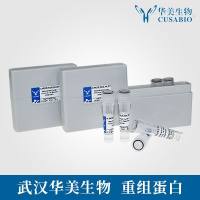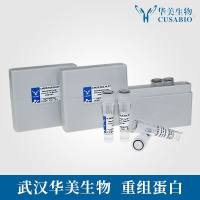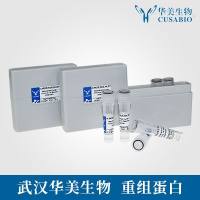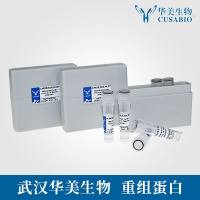Cytokine Bioassays
互联网
Cytokine Bioassays
Introduction
Biological activity of cytokines and their concentrations are commonly measured by cellular proliferation of primary cell cultures or isolated cell lines that are dependent and/or responsive to a specific growth factor. Other aspects of biological activity of cytokines include induction of further cytokine secretion, induction of killing, antiviral activity, degranulation, cytotoxicity, chemotaxis, and promotion of colony formation. In vitro assays to measure all of these activities are available. Here, we discuss general protocols for setting up bioassays to measure:
- Protocol A: Cytokine-induced proliferation
- Protocol B: Cytokine-induced killing
- Protocol C: Protection against viral effects
Note: In setting up bioassays, the possibility of contaminating cytokines in the sample should be eliminated since many of the available indicator cell lines are responsive to more than one cytokine, and several cytokines share signaling receptors. Furthermore, the dependence and responsiveness of cell lines should be carefully ascertained since continuous culture of cells may alter their sensitivity to growth factors. Bacterial endotoxins are effective inducers of cytokines; hence, their presence in the bioassay cultures should be eliminated. In order to obtain statistically significant values, samples should be performed in triplicate wells.
Note: In interpreting bioassay data, note that many cytokines share receptor subunits and signaling second messengers and therefore could generate similar biological effect while being structurally different factors. False data generated due to the presence of other growth factors or soluble receptors can be further examined by blocking the effect of such reagents with specific antibodies.
| Mouse Cytokine Bioassays Quick Guide | |||||||||
|---|---|---|---|---|---|---|---|---|---|
| Cytokine | Indicator Cells | Cell Density (x105 ) | Feeder Cytokine | Assay Medium FBS (%) | Incubation Time (hours) | Spec U/mg (10e) | Recomb. Cytokine Top Conc. (ng/ml) | ED50 (pg/ml) | Comments |
| IL-1b | D10S | 2 | None | 10 | 48 | 8 | 1 | 2 | |
| IL-2 | CTLL-2 (ATCC TIB-214) | 2 | hIL-2 @100U/ml | 10 | 24 | 7 | 10 | 80-300 | |
| IL-3 | MC/9 (ATCC CRL-8306), NFS-60 | 2 | mIL-3 @25U/ml | 10 | 48 | 7 | 10 | 80-300 | |
| IL-4 | CTLL-2 (ATCC TIB-214) | 2 | hIL-2 @100U/ml | 10 | 24 | 7 | 10 | 40-150 | |
| IL-6 | B9 | 2 | hIL-6 @50pg/ml | 10 | 48 | 8 | 0.1 | 3-12 | |
| IL-10 | MC/9 (ATCC CRL-8306) | 2 | mIL-3 @25U/ml | 10 | 48 | 7 | 10 | 150-600 | with mIL-4, 5pg/ml costimulation |
| IL-12 p70 | C20.4 | mIL-2 @100U/ml | 10 | 48 | 6 | 100 | 1000 | ||
| IL-15 | CTLL-2 (ATCC TIB-214) | 3 | IL-2 @100U/ml | 10 | 48 | 6 | 250 | 500-2000 | |
| IFNg | L929 (ATCC CCL-1) | 3.5 | None | 2 | 40 | 7 | 10 | 40-150 | EMCV @1x104 |
| TNFa | L929 (ATCC CCL-1) | 3.5 | None | 2 | 24 | 7 | 10 | 150-600 | Actinomycin D @2µg/ml final |
| GM-CSF | MC/9 (ATCC CRL-8306) | 2 | mIL-3 @ 25U/ml | 10 | 48 | 7 | 10 | 80-300 |
| Human Cytokine Bioassays Quick Guide | |||||||||
|---|---|---|---|---|---|---|---|---|---|
| Cytokine | Indicator | Cell density (x105 ) | Feeder cytokine | Assay medium FBS (%) | Incubation time (hours) | Spec U/mg (10e) | Recomb. Cytokine Top Conc. (ng/ml) | ED50 (pg/ml) | Comments |
| IL-1a | D10S | 2 | None | 10 | 48 | 9 | 1 | 1 | |
| IL-1b | C3H/HEJ Thymocytes | 100 | None | 10 | 72 | 7 | 10 | 100 | |
| IL-2 | CTLL-2 (ATCC TIB-214) | 2 | hIL-2 @100U/ml | 10 | 24 | 7 | 10 | 80-300 | |
| IL-3 | TF-1 (ATCC CRL-2003) | 2 | hGM-CSF @100U/ml | 10 | 48 | 7 | 10 | 80-300 | |
| IL-4 | TF-1 (ATCC CRL-2003) | 2 | hGM-CSF @100U/ml | 10 | 48 | 7 | 10 | 80-300 | |
| IL-5 | TF-1 (ATCC CRL-2003) | 2 | hGM-CSF @100U/ml | 10 | 48 | 7 | 10 | 80-300 | |
| IL-6 | TF-1 (ATCC CRL-2003) | 2 | hGM-CSF @100U/ml | 10 | 48 | 7 | 0.1 | 80-300 | |
| IL-10 | MC/9 (ATCC CRL-8306) | 2 | mIL-3 @25U/ml | 10 | 48 | 6 | 10 | 1250 | costimulate with mIL-4 @ 5pg/ml |
| IL-12 p70 | hPBMC | None | 10 | 48 | 7 | 10 | 100 | ||
| IL-15 | CTLL-2 (ATCC TIB-214) | 3 | IL-2 @100U/ml | 10 | 48 | 6 | 1 | 500-2000 | |
| IFNg | A549 (ATCC CCL-185) | 3.5 | None | 2 | 40 | 7 | 10 | 300 | EMCV @ 4x104 |
| TNFa | L929 (ATCC CCL-1) | 3.5 | None | 2 | 24 | 6 | 10 | 500-2000 | Actinomycin D @2µg/ml |
| GM-CSF | TF-1 (ATCC CRL-2003) | 2 | hGM-CSF @ 100U/ml | 10 | 48 | 7 | 10 | 80-300 |
Useful Links
- http://www.copewithcytokines.de/
- http://bioinformatics.weizmann.ac.il/cytokine/
- http://www.atcc.org
Protocol A: Cytokine-Induced Proliferation of Indicator Cell Lines
What You Need
Materials
- Indicator cell line (see Quick Guide Chart for a given cytokine)
- Culture Medium (RPMI-1640 supplemented with 10% FBS)
- 96-well flat-bottom culture plate (Costar Cat. No. 3595)
- MTT solution (Sigma Cat. No. M5655) 5 mg/ml stock in PBS kept at room temperature (protect from light)
- MTT Lysing Solution 20% SDS/50% DMF
Instruments
- Pipettes and pipettors
- Humidified incubator
- 96-well micro test spectrophotometer
Experiment Duration
- 24-48 hour incubation (see summary chart)
- 1 hour assay preparation
Method
- Add 100 µl of Culture Medium to each well of the 96-well Assay plate.
- Dilute samples and standard (see Quick Guide Chart for standard range) by 2-fold serial dilution in the Assay plate from row 2 to 12. Leave row 1 as blank.
- Wash indicator cells 3 times with RPMI-1640 and resuspend in Culture Medium at a density of 2-3.5 x 105 cells/ml (see Quick Guide Chart ).
- Add 100 µl of cell suspension to each well.
- Incubate cells for 24-48 hours (see Quick Guide Chart ) at 37°C, 5% CO2 in a humidified incubator.
- Add 10 µl/well of 5 mg/ml MTT solution to the plate and incubate for 4 hours.
- Add 50 µl/well of MTT Lysing Solution to the plate and incubate overnight.
- Read plate at 570-650 nm.
- Graph standard curve and analyze data.
Protocol B: TNF-alpha-Induced Killing of L929 Cell Line
What You Need
Materials
- L929 mouse fibroblast line (ATCC Cat. No. CCL-1)
- Culture Medium (RPMI supplemented with 10% FBS)
- Assay Medium (RPMI supplemented with 2% FBS)
- 96-well flat-bottom culture plate (Costar Cat. No. 3595)
- Actinomycin D, 500 µg/ml stock aliquot kept at minus 80°C (protect from light)
- MTT solution (Sigma Cat. No. M5655) 5 mg/ml stock in PBS kept at room temperature (protect from light)
- MTT Lysing solution, 20% SDS/50% DMF
Instruments
- Pipettes and pipettors
- Humidified incubator
- 96-well micro test spectrophotometer
Experiment Duration
- 48-hour incubation (see Quick Guide Chart )
- 1 hour assay preparation
Method
- Prepare L929 cell suspension at a density of 3.5 x 105 /ml in assay medium. Add 100 µl/well to the 96-well Assay Plate and incubate overnight at 37°C, 5% CO2 in a humidified incubator.
- Dilute samples and standard (see Quick Guide Chart for standard range) by 2-fold serial dilution in the Assay Medium in 100 µl/well in another 96-well plate from row 2 to 12. Leave row 1 as blank.
- Prepare a 4 µg/ml working solution of the Actinomycin D by diluting the 500 µg/ml stock 125 times in the Assay Medium. Keep Actinomycin D solution protected from light. Add 50 µl of this working solution of Actinomycin D to each well.
- Transfer 50 µl of titrated samples and standard to the corresponding wells on the Assay Plate.
- Incubate plate for 24 hrs at 37°C, 5% CO2 in a humidified incubator.
- Add 10 µl/well of 5 mg/ml MTT solution to each well and incubate for 4 hours.
- Add 50 µl of MTT Lysing Solution to each well and incubate overnight.
- Read plate at 570-650 nm.
- Graph standard curve and analyze data.
Protocol C: IFN-gamma Protection from Viral Infection of Cell Lines
What You Need
Materials
- L929 mouse fibroblast line (ATCC Cat. No. CCL-1) or A549 human lung carcinoma (ATCC Cat. No. CCL-185)
- Culture Medium (RPMI supplemented with 10% FBS)
- Assay Medium (RPMI supplemented with 2% FBS)
- 96-well flat-bottom culture plate (Costar Cat. No. 3595)
- EMC virus, 107 pfu/ml aliquots stock kept at minus 80°C
- MTT solution (Sigma Cat. No. M5655) 5 mg/ml stock in PBS kept at room temperature (protect from light)
- MTT Lysing solution, 20% SDS/50% DMF
Instruments
- Pipettes and pipettors
- Humidified incubator
- 96-well micro test spectrophotometer
Experiment Duration
- 24-hour incubation (see summary chart)
- 1 hour assay preparation
Method
- Prepare L929 or A549 cell suspension at a density of 3.5 x 105 /ml in assay medium. Add 100 µl/well to the 96-well plate and incubate overnight at 37°C, 5% CO2 in a humidified incubator.
- Dilute samples and standard (see Quick Guide Chart for standard range) by 2-fold serial dilution in the Assay Plate from row 2 to 12. Leave row 1 as blank. Incubate the Assay Plate for 6 hours.
- Aspirate supernatant from the wells carefully and add 100 µl/well of EMC virus solution at a density of 1-4 x 104 pfu/ml (see Quick Guide Chart for human IFN-gamma: 1/250 dilution of stock of 107 pfu/ml, for mouse IFN-gamma, 1/1000 dilution of stock of 107 pfu/ml).
- Incubate plate for 40 hours at 37°C, 5% CO2 in a humidified incubator.
- Add 10 µl of 5 mg/ml MTT solution to each well and incubate for 4 hours.
- Add 50 µl of MTT Lysing Solution to each well and incubate overnight.
- Read plate at 570-650 nm
- Graph standard curve and analyze data.






